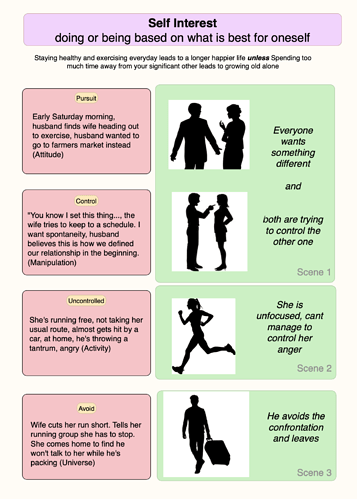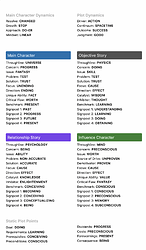Sure, @mlucas Mike, thanks for that. We see a lot of theory spinning around, but subtlety is something we learn from seeing This–>That. And the “token drops” as we say here in Turkey.
Maybe it’s cool and I’m doing it “accordingly.” But the way I do conflict is more from the plot of the story, with a hat-tip to the Issue/Problem/Solution/ or Symptom/Response, referencing the signpost somehow. The PSR part clogs up my joints, like arthritis.
But these days I’m writing some short stories with the impetus of “getting this.” So seeing the craft of people who have an example would be a good motivation.
It’s one thing to create a scene about a woman fighting with her husband then goes on a run, etc. But when you have the STORY already it’s a different craft.
Okay, here’s the scene. (Short story, YA)
MC has to climb the face of a cliff, fight off a phoenix, and drop a gem into a cave. Also going on is concern for his sick mother back in camp and his girlfriend who has gone missing. IC is presently passed out, the mind-talking phoenix is taking over trying to stop him.
Obtaining (Rationalization, Commitment, Responsibility, Obligation). This is the commitment/responsibility scene SP4. Because…that is what has to happen right here right now.
[Coming from Rationalization-Mind (Knowledge)]
Commitment-Responsibility- Activity/Manipulation (Ability, Desire)
[Leading to Obligation-Situation (Thought)]
If he “wastes” his time climbing the mountain, worse things can happen to his abducted girlfriend in that lost time, so he should give in to the suggestions of the phoenix; The gem is controlling him, if he doesn’t take care of this first, he can’t be freed of its power and get back to help his mother and the others who are trapped.
I forgot to add, InstantScenes would be, all during this climb (since this is a short story)
Going Beyond The Point Of No Return (climbing)
- Being Driven to Pursue Something-K
- Believing in One’s Country-T
- Spurning Someone-D
- Eluding Someone-A
To
Taking Care of Someone’s Responsibilities (drop-off)
- Having One’s Actions Limited-A
- Being Haunted by Someone’s Conscience-T
- Tempting-D
- Living Free of a Particular Group-K
That’s a lot of dialogue, internal and external. The way I see it, as the climax, it needs to be the tightest scene, so I want to make sure to have an inequality as clear and present.



